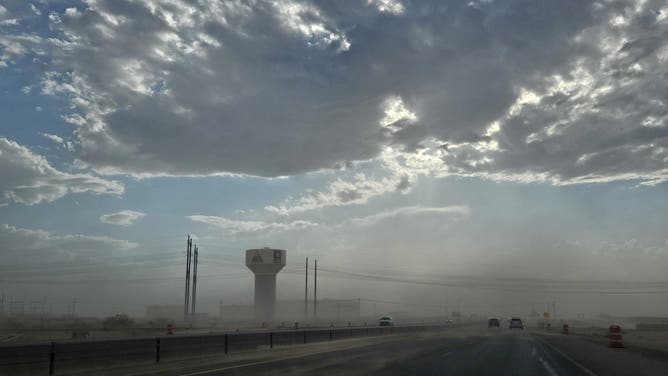Satellite imagery shows massive haboob overtaking parts of Desert Southwest, Mexico
At least 18 people were hospitalized after the dust storm caused multiple car crashes on Interstate 25. Most of the world’s dust storms occur in the Middle East and Africa, but they do occasionally happen in the Desert Southwest, especially during the warmer months of the year.
Pull aside, stay alive: Tips to stay safe during a dust storm
After a deadly dust storm caused a pileup that left dozens in the hospital and killed 6 people, FOX Weather Command has tips for protecting yourself if you find yourselves within a dust storm.
DEMING, N.M. – Winds from strong to severe thunderstorms that impacted West Texas and New Mexico on Wednesday evening triggered a massive dust storm, known as a haboob, which was even visible from space.
The National Weather Service office in El Paso, Texas, issued a series of Dust Storm Warnings for southern New Mexico around the Interstate 10 corridor.
Meteorologists had warned that visibilities could suddenly drop to less than a quarter of a mile, posing dangers for travel along local interstates.

Satellite animation of a haboob over the Desert Southwest on June 19, 2024
(NOAA)
Haboobs are triggered when gusty winds pick up sand and dust, forming what appears to be a wall that can stretch for miles and rise thousands of feet high.
The term originates from Arabic culture but has been adopted by other languages to describe the phenomenon of blowing dust in desert regions around the world.
While most of the world’s dust storms occur in the Middle East and Africa, they occasionally happen in the Desert Southwest, especially during the warmer months of the year.
DUST STORMS ARE MORE DANGEROUS THAN PREVIOUSLY THOUGHT
Wednesday evening’s event was even spotted by NOAA’s GOES-16 satellite, which orbits more than 22,000 miles above Earth’s surface.
Haboobs typically affect a community's visibility and air quality for only a few minutes but can travel hundreds of miles.
Despite the impressive signature on satellite imagery, there were no immediate reports of damage or significant traffic crashes related to Wednesday's event.
Earlier in the day, poor visibility likely played a role in a massive pile-up outside of Albuquerque in Sandoval County. New Mexico State Police said parts of Interstate 25 were shut down, so first responders could attend to numerous injured motorists.

Dust storm impacts communities in West Texas and southern New Mexico on 6/19/2024.
(NOAA)
WHAT IS A HABOOB? IT’S JUST DUST IN THE WIND…
The impacts from dust storms and haboobs are similar and can catch drivers off guard, similar to blizzards in the northern latitudes.
Previous studies have found the deadliest roadways from dust storms are between Phoenix and Tucson, Arizona, and in southwestern New Mexico. The Interstate 10 corridor in the Desert Southwest is often a hotspot for impacts.
Local NWS offices have the authority to issue alerts and warnings to give travelers a heads-up about impending conditions, but since these events are unpredictable, meteorologists encourage motorists and residents to always have a plan ready.
